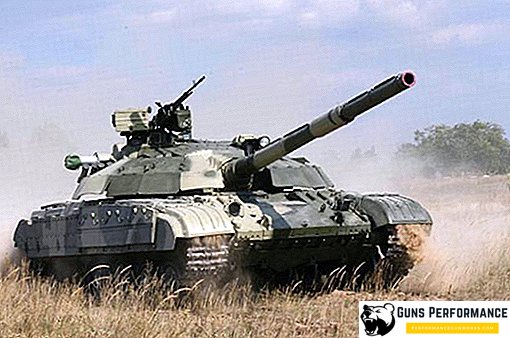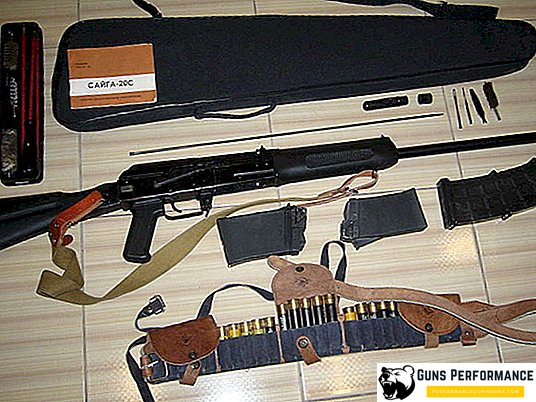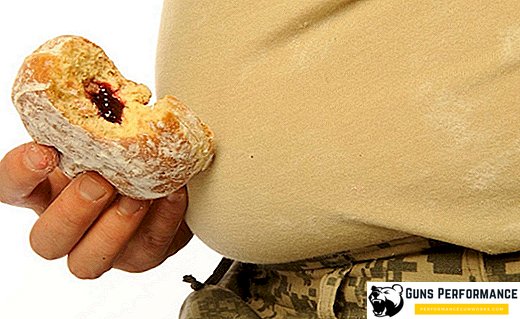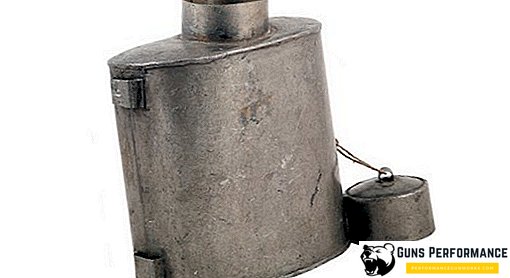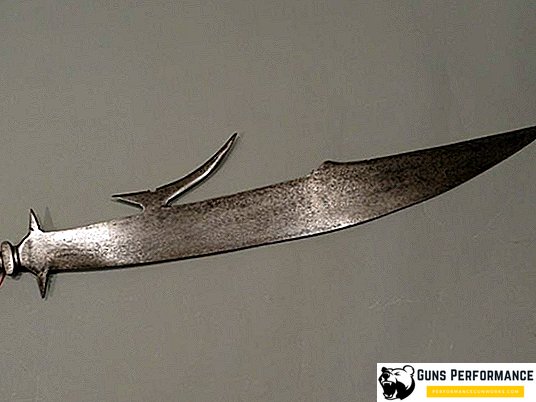
Glaive (or gliafiya) is a type of cold-arms cold-arms of chopping and piercing action, which was extremely popular with European infantry throughout the 15th and 16th centuries. It consisted of a long shaft (from 1.2 to 1.5 meters) and an impressive blade-tip, which looks very much like a falchion.
It should be noted that analogues of the European Glaive can be easily found in the East: the famous Chinese commander of the Three Kingdoms era Guan Yu was armed with guan tao - the Chinese likeness of these weapons. The Japanese naginata is quite similar to a glafu, though, instead of a pole, it had the longest handle. Also, slavic berdysh, a European halberd, and an Indian bhuj can be called relatives of the glyufa.
Glaive is a fairly versatile type of cold weapon, which allows an infantryman to successfully resist the enemy in the conditions of both closed and decaying ranks. Like any other long-range weapons, it allowed its owner to keep the enemy at a decent distance. Glaive is a weapon that gave the foot soldier good chances to fight off the rider's attack, especially when it comes to a detachment of infantry.
Today there are many varieties of these weapons, which existed in different historical periods among different nations. Some researchers talk about a hundred different modifications of this weapon.
Description of the weapon and its history

As it was already said above, the glyuf consisted of two parts: a long shaft and a massive blade-tip. The shaft was reinforced with rivets or covered with metal strips to protect it from cutting. Although, even if the glafe shaft broke, the blade with a broken handle could be used in battle.
The tip of the glèfe differed in its considerable length (up to 60 cm) and impressive width (it sometimes reached 7 cm), its shape could be different: with a well-defined tip or without it. Sharpening the blade was one-sided. A distinctive feature of the tip of the glaff was the presence of a thorn - it was called the "sharp finger" - which most often moved away from the bottom of the blade and was directed at a small angle towards the tip of the weapon. The main function of this element was to give the weapon additional power when striking, as well as to seize the enemy’s weapon while repelling an attack from above.
Another tip was often made on the lower part of the shaft, it was not sharpened, but simply pointed. He was called a podpyatom or heel and served as a counterweight, to improve the balance of weapons. It was also convenient for them to finish off the wounded foe.
Glafe had a huge number of species, which differed primarily in the form of the blade-tip. There is a description of both dvuhklinkovyh or bilateral glafov, however, many historians doubt that such a weapon ever existed in reality. Such Glafs had tips on each side of the shaft, sometimes they are even described as double-edged. Of course, such a weapon looks quite impressive - it’s not for nothing that Hollywood filmmakers and creators of computer games fell in love with it - but it’s completely incomprehensible how to use it in real combat.
If we talk about the history of the appearance of the glafu, it is very vague. The etymology of this name is not entirely clear. Most modern researchers believe that it comes from the name of the Roman sword gladius. In early English and French sources, the Glaive called the ordinary spear, and sometimes the ordinary sword. The current meaning of this word has acquired only in the XV century, although the glafu was actively used already in the second half of the XIV century.

A 14th century manuscript from the Ambrosian Library depicts an Italian warrior armed with a Glaive. By the end of this century, it had become the usual infantry weaponry. In Burgundy, the claybugs especially liked the crossbowmen, the legendary Karl the Bold demanded that the glyphs necessarily be part of the armament of the foremost infantry units. You can also add that the glaive was perfect for repelling cavalry attacks.
By the end of the 15th century, infantrymen were often called "Glaves".
At the beginning of the XVI century, the Glaive became the favorite weapon of the German infantry. A large number of these weapons remained on the battlefield of Mühlberg, some of which have survived to the present day and are now in museums. After the appearance of firearms, the value of the glafe began to gradually decrease.
Glaive was often used as a weapon by court bodyguard detachments, so today in museums and private collections you can find samples richly decorated with gold or blackening. Glaphs were very popular at the French court, as well as in Mantua, Venice and Florence. Glaphs were used as ceremonial weapons until the 18th century. True, at the same time she completely lost her combat significance and became just a rich toy, a status symbol.

A kind of glafu is kuza, which is first found in France in the XV century. This weapon differed from the glafu in the absence of a directional point and in the form of a knife-like tip, which was intended for delivering mainly chopping blows. In addition, the kuza did not have a spike or any other additional elements.
Kuzu was loved by the Swiss, who at one time served the French crown. Later this weapon got to Spain and Germany. The bodyguards of the Polish king were also armed.
In recent years, the confusion regarding the glaff has only intensified. The fact is that this weapon was very much liked by the creators of fantasy, anime and computer toys. Exactly on the Internet there is a "terrible jagged glaive," absolutely fantastic shape and incomprehensible purpose. In addition, in recent years, the "throwing of the glaive" resembling a Japanese shuriken overgrown has appeared on the expanses of games and books. She not only crushes enemies in dozens, but can also return to her master in the event of an inaccurate throw.
How to use the glafu

The main advantage of the glaive, however, like any other long-range weapons was its significant radius of destruction. A warrior armed with a sword, sword, mace or ax is unlikely to be able to reach an infantryman who has a glaive in his hands. These weapons are rarely pricked, more often chopped. In a closed ranks, a warrior with a glafu mainly delivered blows from top to bottom, but if he had free space, then the arsenal of combat techniques increased significantly.
In this case, it was possible to use the middle and lower parts of the shaft, its opposite end. Like any dlinnodrevkogo weapons from the Glaive was a weak spot. Her blow could have been deflected by a shield or intercepted behind the shaft with a hand, which led to the disarming of the warrior. It is clear that the glaive was not very effective in the melee.
Well, the last thing to add. Glaive was a heavy and powerful weapon designed to defeat a warrior in heavy armor. So she wasn't too good for filigree fencing.


